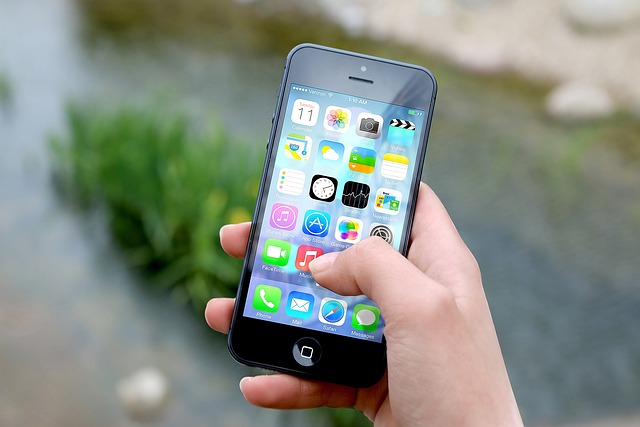42% of teenagers experience ongoing feelings of sadness or hopelessness, 20% experience depression by the age of 17, and 22% have seriously considered committing suicide, according to statistics released by Compass Health Center in 2024.
The teen mental health epidemic has struck America at its core.
Over the last few decades, rates of depression and anxiety among teens have increased rapidly, leaving teens struggling to succeed in school and other environments. Many experts have attributed this crisis to one fundamental development — the rise of the cell phone.
Teens and Phones
Today, the vast majority of teens own cell phones. The constant presence of these devices results in excessive use, dependency, and addiction. The average teenager spends about 8 hours and 39 minutes on a screen daily and nearly one in three teens are addicted to their phones according to a recent research report by Common Sense Media.
The primary issue with cell phones is their unlimited access to social media. This often results in doom-scrolling, the habit of scrolling through news or videos for an unhealthy amount of time. This is exacerbated by platforms’ personalized algorithms which constantly feed people content catered to their interests. For teens, this is especially dangerous. Because teenagers’ prefrontal cortex, the part of the brain responsible for impulse control, isn’t fully developed, they can’t always control their addictive behaviors.
Worst of all, social media sets unrealistic standards, causing many teens to feel inadequate. This constant comparison results in teens having distorted self-images and low self-esteem.
To combat this problem, most doctors suggest screen limits or designated times throughout the day with no phone use. Others suggest more extreme solutions.
Phone-free Schools?
NYU professor and psychologist Jonathan Haidt recently published a New York Times bestseller The Anxious Generation. In his book, Haidt blames the mental health crisis on increased phone use and claims phones have rewired children’s brains, changing the course of their development. Haidt proposes a four-part solution: more childhood independence and free play, no phones before high school, no social media before 16, and most controversial, phone-free schools.
Phone-free schools have become increasingly popular over the past few years. Many states in the US, including Florida and Ohio, have passed laws banning cell phones in school. Massachusetts has not imposed a state-wide ban but has funded the cause. WCVB reports that the state offered over $1.3 million in school grants to control phone use. The money went towards purchasing lockers, pouches, and charging stations.
In Massachusetts, policies regarding phone use vary by district. In towns like Methuen and Ipswich, phones are completely banned. However, at Reading Memorial High School (RMHS), administrators oppose a complete ban and instead urge students to use their phones safely and responsibly.
Principal Callanan of RMHS explained, “Our whole job here is to prepare students for life after high school, and cell phones are not going away so it’s now part of our responsibility to teach young people to use all electronics appropriately.” For this reason, RMHS has not imposed an overarching ban but has alternatively allowed teachers to regulate phone use in their classrooms.
Nonetheless, Principal Callanan emphasized students “should not be pulling [phones] out during class if it’s interrupting education.”
Teachers & Students Weigh In
Teachers have their own opinions about phones. Mr. Skehan of the Math Department prefers a total ban but admits it would be difficult to implement. He said, “I just think that we should go one way or the other: either get rid of them entirely or don’t give kids second opportunities if they miss stuff because they were on their phone.”
Mrs. Williams of the English Department has taken it a step further. She has made it a point to address the consequences of phone use in the classroom by showing her students documentaries, and even having them read passages from The Anxious Generation. Still, she has noticed many students on their phones. “I am at the point where, if I see your phone one more time, I’m gonna take it,” she said. For Mrs. Williams, the most important thing is that her students put in their best effort. She said, “When it comes to education and the amount of effort, skill, and time teachers put into lessons, for the sake of students, I want to know that students are 100% locked in.”
Students also have strong opinions on the topic. Kyle Marquardt (‘25) believes phones can be useful in school. He said, “Sometimes I plug in my music and get locked in. Sometimes I scroll on TikTok for a brain break. Maybe I need to text my friends or parents.” Marquardt’s sentiments are echoed by a large proportion of the student population that believes phones can help them focus or contact people during emergencies. Marquardt does think however that students should use phones for good reasons. He said, “It’s not just the phone, but the way the phone is being used.”
Joseph Vieira (‘25) shared similar insights. He believes “As long as teachers know how to teach, keep the students engaged, and actually care, phones are not an issue.” Vieira also thinks a total ban would create more problems than it would solve. “I think it would lead more students to be jaded against school and I don’t think it would solve the issue long-term,” he said.
Underclassmen at RMHS agree. Sebastian Orsini (‘27) said, “There are better ways to limit phone usage than implementing a school-wide ban.” The sophomore also reiterated that phones can become necessary for research or communication, especially when school computers are not working.
Ultimately, the issue of phones in school is growing in importance as it affects not only students’ learning but also their mental health. Each school has its own policy, but the overarching goal remains the same: improve the quality of education and help students overcome mental health struggles. Together, students, teachers, and administrators can work to create a healthier, more engaging school environment.













Clay • Feb 13, 2025 at 11:26 am
Great read!